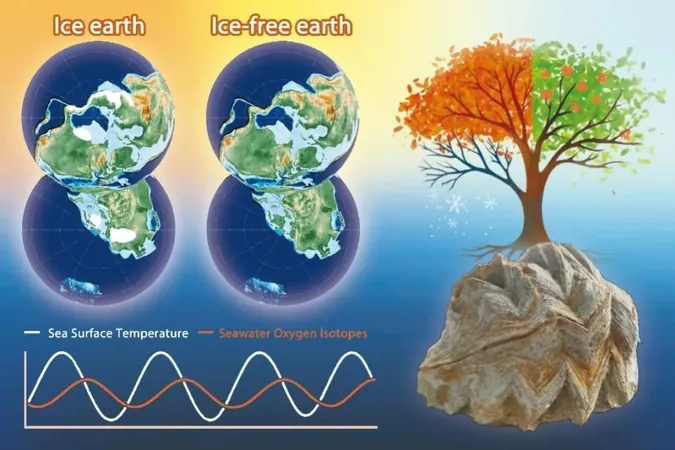
Oyster Fossils Unveil Secrets of Ancient Climate Change
2025-05-13
Author: Nur
Did you know that oysters are not just a delicious treat but also vital to understanding the Earth's climatic history? These fascinating creatures serve as natural recorders of environmental shifts, much like trees do with their rings.
Just like you can tell a tree’s age from its rings, the growth bands on oyster shells provide insights into the climatic conditions during their formation. Warmer summer temperatures result in wider, lighter bands, while colder winters yield thinner, darker ones.
Now, a groundbreaking study from an international team of scientists hailing from China, Germany, Britain, and Madagascar has unlocked new insights from ancient oyster fossils. Dating back to the Early Cretaceous period—around 140 million years ago, a time when dinosaurs roamed the planet—these fossils reveal significant data about past environmental conditions.
The research shows that sea surface temperatures exhibited seasonal fluctuations rather than a steady rise during this ancient warm climate. This challenges the traditional view that greenhouse conditions had little seasonal variation and rarely involved glacial activities.
Lead researcher Ding Lin from the Institute of Tibetan Plateau Research highlighted the complexity of Earth's climate history, noting that the findings suggest periods of warming were punctuated by episodes of cooling, allowing for polar ice to reform.
Utilizing advanced instruments to analyze the oyster fossils’ microstructure and chemical composition, the team found that ocean temperatures in the Southern Hemisphere during winter were considerably lower—by 10 to 15 degrees Celsius—compared to summer. This aligns with current seasonal variations, indicating that even in ancient warm eras, seasonal changes were pronounced.
Furthermore, the researchers found that glacial meltwater likely flowed into ocean waters during this period, reminiscent of the melting glaciers on Greenland today, indicating the presence of glaciers despite the overall warmth.
As first author He Songlin eloquently put it, "The Early Cretaceous greenhouse Earth seems like a symphony, occasionally punctuated by brief glacial notes." He predicts that the disappearance of polar ice sheets will not be a linear process but will instead involve fluctuating glacier activity as global temperatures rise.
This study reframes our understanding of climate change, suggesting it’s not a simple upward trajectory but rather a phenomenon marked by extreme weather patterns and unpredictable shifts. It also highlights the potential for natural factors—like volcanic activity and shifts in Earth’s orbit—to instigate unexpected cooling events, even in our warming world.
The research shines a light on the ancient climate of Earth, revealing its hidden rhythms and the icy echoes of its past. It serves as a crucial reminder of the intricate and unpredictable nature of climate change.




 Brasil (PT)
Brasil (PT)
 Canada (EN)
Canada (EN)
 Chile (ES)
Chile (ES)
 Česko (CS)
Česko (CS)
 대한민국 (KO)
대한민국 (KO)
 España (ES)
España (ES)
 France (FR)
France (FR)
 Hong Kong (EN)
Hong Kong (EN)
 Italia (IT)
Italia (IT)
 日本 (JA)
日本 (JA)
 Magyarország (HU)
Magyarország (HU)
 Norge (NO)
Norge (NO)
 Polska (PL)
Polska (PL)
 Schweiz (DE)
Schweiz (DE)
 Singapore (EN)
Singapore (EN)
 Sverige (SV)
Sverige (SV)
 Suomi (FI)
Suomi (FI)
 Türkiye (TR)
Türkiye (TR)
 الإمارات العربية المتحدة (AR)
الإمارات العربية المتحدة (AR)